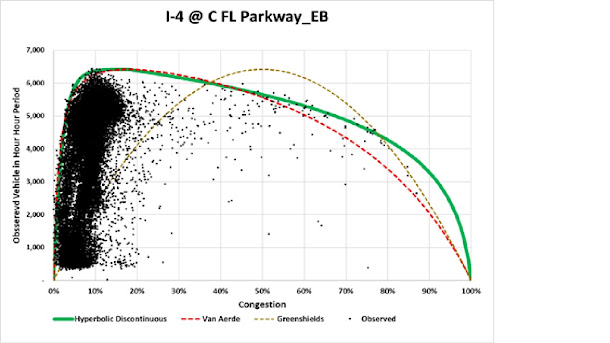All about the
Bass
Because you
know I'm all about that bass
'Bout that bass, no treble
I'm all about that bass, 'bout that bass, no treble
I'm all about that bass, 'bout that bass, no treble
I'm all about that bass, 'bout that bass, hey
I beg to
differ. It’s all about the Math!
I know that Math is Hard, but bear with me. Math may be
the explanation, and the solution, to our current problems. This might sound strange
but what mathematicians would call infinity, a scientist might call an absolute,
an ethicist might call Truth, and an Evangelical would call God, But all can be
analyzed/approached the same way.
Let’s suppose the existence of infinity/absolute/Truth/God.
The absence of these things would be death, flat-lined. A flat-line has no Amplitude, no variance. The presence of these things must therefore have an Amplitude according
to the formula ½A2=σ2,
where A is the amplitude and σ2
is the variance. Infinity/absolute/truth/God as a wave, the opposite of a
straight line, must be ...doh...infinite. A wave is an infinitely repeating function
of π, which is merely saying that while a wave is infinite, there might
be no difference between its behavior at π, 2π, 3π, …nπ, …∞π. If there
is an absolute that repeats as a function of π, it must have a repeating
median/mean, μ, of
π /2.
Individuals can act like a wave. (Don’t believe me! Have you never seen a crowd at a stadium doing the wave!). So how do you get many individuals to perform like a wave. A normal (The mathematical name for it. Not a moral judgement!) distribution of individuals is the logistics, hyperbolic secant squared, distribution, 1/4s*sech2((x-μ)/2s). S is a function of the variance, according to the formula σ2=s2π2/3. That function is also known as the Probability Distribution Function, PDF.
While ordinary wave functions repeat with a period related
to π, hyperbolic wave functions,
such as sech, repeat with a period related to πi, where i is the
imaginary number, i=√-1. ( I know math is hard, but the kids in Algebra
know this!). Also for functions of x, f(x), there is a derivative
of that function, f’(x), which is the slope of that function, and an integral
of that function F(x)=∫f(x)δx,
which is the area under that function. The derivative of the logistics distribution
is
-1/8s2*sech2((x-μ)/(2s))*tanh((x-μ)/(2s)). The integral
of the logistics function, which also goes by the name Cumulative Distribution
Function, CDF, is 1/2*tanh((x-μ)/(2s))+1/2.
( again Math is Hard. Feel free to check with the kids taking AP Math!)
All of this to say that a wave function, its derivative,
and its integral can be defined for any value of x given only two parameters:
the median, μ, which is akin to the phase of the wave, and the
range, s, which defines the amplitude of the wave. There are three behaviors
that are of interest. The first is User Optimal, UO, defining only the median, as μ=0 and allowing any value for
s. This can be defined as “Only I matter,” “Second place is first loser”, “Winning is the only thing”, “All’s fair” , etc. The second behavior is System Optimal,
SO where you accept infinity/absolute/Truth/God/π
and thus the median must be π/2, but you say that you always are 100% certain. The problem is
that since you are only an individual, according to the logistics distribution you
must also be 40% certain at either 1/3π or
2/3π, and 6% certain at either 1/6π or 5/6π, etc. This means
that you then have to be much more than 100% certain if you add all of these together.
While being more than 100% certain sounds great, it is mathematically
impossible. In fact the integral, CDF, of the logistic function when μ=π/2 and s=.25, which
is consistent with being 100% certain at μ, starts at 50% certain at x=0,
while the certainty should not be 50% until x=π/2.
This is like the scene at the door to the back room in Casablanca. UO behavior is asking ”Do you know who I am?” SO behavior is throwing all UOs out of the Club. The third behavior, the Nash Equilibrium (for reasons that would make your head hurt) is saying that μ=π/2 and s= 0.51451 and this is like saying “I know who you are. You’re lucky your cash is good at the bar.” https://www.youtube.com/watch?v=aALbiGJpw7c. An ideal single wave would be s=.55139 which is consistent with a value of s=.5 (twice the SO value) on a hyperbolic non-Euclidean surface because of the use of the hyperbolic secant, from a perfect multiple wave. The derivative of this function and its integral under all of these behaviors are shown below.
Figure 1 Derivative, dPDF, of logistic function
Figure 2 Certainty, PDF, of logistic function
Figure 3 Integral, CDF, of logistics function
Those following a User Optimal, UO, strategy will try to get those following a System Optimal, SO, strategy to join them by saying that "I
will act like you are correct ( the quiet part NOT out loud being especially since as a UO, I can accept any s)
if you act like my median of μ=0
is correct". Instead if the SO wants to be like perfection, then it should adopt
a Nash Equilibrium, NE, strategy. The best strategy is not to win, UO, and not the
common good, SO, but to quote mathematician John Nash from Ron Howard’s Oscar winning
A Beautiful Mind, is “to win
for the common good,” a Nash Equilibrium. If you are a SO plan to join with NEs,
NOT with UOs, if you want to be perfect.




